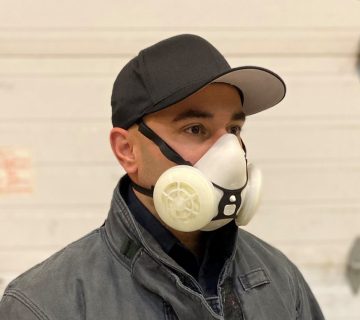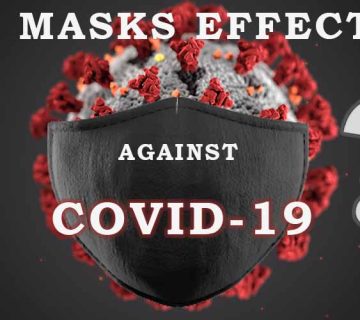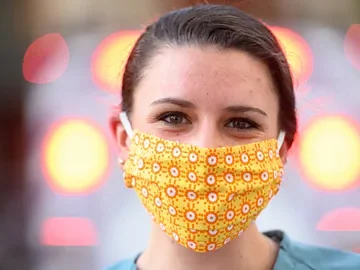Can I Paint While Pregnant If I Wear a Mask?
Pregnancy is an exciting time filled with big changes and lots of questions. One question that pops up a lot, especially for moms-to-be who love DIY projects, is: Can I paint while pregnant if I wear a mask? Maybe you’re itching to spruce up the nursery with a fresh coat of paint, or perhaps you just want to tackle a home project before the baby arrives. It’s a fair question, and the answer isn’t as simple as yes or no. There’s a lot to unpack here—safety concerns, paint types, mask effectiveness, and even how your pregnancy stage plays a role.
In this blog post, we’re diving deep into this topic to give you clear, practical answers. We’ll look at what science says, break down the risks, and share actionable tips to keep you and your baby safe. Plus, we’ll cover some fresh angles that other articles might skip, like how painting might affect your energy levels or what to do if you’ve already been exposed to fumes. Let’s get started!

Why Does Painting While Pregnant Raise Concerns?
Painting seems harmless, right? You grab a brush, pick a color, and get to work. But when you’re pregnant, it’s not just about the fun of transforming a room—it’s about what’s in the paint and how it might affect you and your growing baby. The main worry comes from chemicals in paint, especially fumes that you breathe in. These fumes can come from something called volatile organic compounds (VOCs), solvents, or even tiny dust particles if you’re sanding old paint.
Here’s the deal: when you’re pregnant, your body is extra sensitive. Your baby’s organs are forming, and anything you breathe in could potentially reach them through your bloodstream. Studies show mixed results—some suggest a link between heavy chemical exposure and risks like miscarriage or birth defects, while others say casual painting at home is probably fine. So, where does wearing a mask fit in? It’s a step in the right direction, but it’s not a magic shield. Let’s break it down further.
What’s in Paint That Could Be Risky?
- VOCs: These are chemicals that turn into gas and float into the air. They’re in many paints and can cause headaches or dizziness.
- Solvents: Found in oil-based paints, these can be harsher and are linked to bigger risks if you’re around them a lot.
- Lead: Old paint (pre-1978) might have lead, which is super dangerous for babies’ brain development.
- Dust: Sanding old paint can kick up particles you don’t want to breathe in.
The Mask Factor
A mask can filter out some of these nasties, but not all masks are created equal. A basic cloth mask won’t do much against fumes—it’s like using a paper towel to stop rain. You’d need a respirator mask approved by the National Institute for Occupational Safety and Health (NIOSH) to really block paint vapors. Even then, it’s not a full guarantee. So, let’s dig into the risks and safety steps.
Is Painting While Pregnant Actually Dangerous?
Let’s get to the heart of it: how risky is painting when you’re expecting? The truth is, it depends on a few things—how much paint you’re around, what kind it is, and how long you’re exposed. Most experts agree that painting a room once or twice at home isn’t likely to cause harm. But there’s not a ton of hard data because, well, scientists can’t exactly test this on pregnant women for ethical reasons.
What Science Says
- A 2012 study from the Danish National Birth Cohort looked at over 20,000 pregnant women. About 7% were exposed to paint fumes at home in their first trimester. They found no clear link to birth defects from casual exposure, but the study wasn’t perfect—it relied on self-reports, not exact measurements.
- Another study on rats (2017) showed that breathing in a lot of toluene (a solvent in some paints) affected baby rats’ memory skills. Humans aren’t rats, but it’s a red flag worth noting.
- Heavy, ongoing exposure—like if you’re a professional painter—has been tied to higher risks of miscarriage or developmental issues, according to older research from the 1980s. But that’s not the same as painting your nursery for a weekend.
Real-World Risk
For most pregnant folks, the risk from painting one room is low. Think of it like eating a piece of sushi—there’s a small chance something could go wrong, but it’s not a sure thing. The bigger worry comes if you’re around paint fumes all day, every day, or if you’re stripping old lead paint without protection. Wearing a mask helps, but it’s just one piece of the puzzle.
A Fresh Angle: Your Energy and Balance
Here’s something you might not see in other articles: pregnancy changes how your body handles physical tasks. Painting means bending, stretching, and maybe climbing a ladder. As your belly grows, your balance shifts, and you tire out faster. A 2013 study on “nesting behavior” found pregnant women often feel a strong urge to prep their homes, but overdoing it can lead to falls or exhaustion. So, even if the fumes are manageable, the physical side of painting matters too.
Can a Mask Really Keep Me Safe?
You’re probably thinking, “Okay, if I wear a mask, I’m good, right?” Not so fast. Masks can help, but they’re not all the same, and they don’t block everything. Let’s look at how they work and what you need to know.
Types of Masks
- Cloth or Dust Masks: ❌ These catch big particles like dust but let fumes slip right through. Skip these for painting.
- N95 Respirators: ✔️ These filter out 95% of tiny particles and some vapors if fitted right. They’re a solid choice, approved by NIOSH.
- Full Respirators with Filters: ✔️ The gold standard. These have special cartridges to trap chemical vapors and need to be fitted snugly.
Does It Work for Pregnant Women?
A 2015 study by the CDC tested N95 masks on pregnant women doing light exercise. They found no big changes in breathing, heart rate, or fetal heart rate after an hour. That’s good news! But painting isn’t the same as walking on a treadmill—fumes add a layer of risk the study didn’t cover. Plus, if your mask isn’t tight or you wear it too long, gaps can let stuff in.
Practical Tip: Fit Matters
Ever worn glasses and had them fog up with a mask? That’s a sign it’s leaking. For painting, you need a mask that seals to your face. Try this:
- Put it on and adjust the straps.
- Breathe in hard—if it sucks in tight, it’s good.
- Breathe out—if air escapes around the edges, tweak it.
Even with a great mask, don’t rely on it alone. Ventilation and paint choice are just as big.
What Kind of Paint Should I Use?
Not all paints are the same, and that’s a huge deal when you’re pregnant. Some are safer than others, and picking the right one can cut your risks way down. Here’s the lowdown.
Paint Types and Safety
| Paint Type | What’s in It? | Safety Level | Best For Pregnant Painters? |
|---|---|---|---|
| Oil-Based | Solvents like toluene, high VOCs | High risk | ❌ Avoid—fumes are strong |
| Latex (Water-Based) | Water base, lower VOCs | Moderate risk | ✔️ Okay if low-VOC |
| Zero-VOC | Almost no VOCs | Low risk | ✔️ Safest bet |
| Lead-Based (Old) | Lead (banned since 1978) | Very high risk | ❌ Never use or strip |
- Oil-Based Paints: These are the bad guys. They release strong fumes that can make you dizzy or worse. Skip them entirely.
- Latex Paints: Water-based and milder, but some still have solvents like ethylene glycol. Check the label!
- Zero-VOC Paints: These are made to release almost no fumes. Brands like Benjamin Moore Natura or Sherwin Williams Harmony are popular picks. Heads-up: adding color tint might sneak in some VOCs, so ask at the store.
A Hidden Risk: Old Paint
If your home is old (built before 1978), the walls might have lead paint under newer layers. Sanding or scraping it releases dust that’s toxic to your baby’s brain. The EPA says pregnant women should steer clear of lead removal entirely—let a pro handle it.
Pro Tip
Call the paint store and ask, “Does this have zero VOCs even after tinting?” It’s a question not everyone thinks to ask, but it could save you from hidden chemicals.
How Can I Paint Safely While Pregnant?
Okay, let’s say you’re set on painting—maybe it’s the nursery, and you just can’t resist. How do you do it without stressing about risks? Here’s a step-by-step guide to keep you safe.
Step 1: Pick the Right Time
- First Trimester (0-12 weeks): This is when your baby’s organs form, so it’s the riskiest time. If you can, wait until later.
- Second/Third Trimester: Still be careful, but the risks drop a bit after the first 12 weeks.
Step 2: Gear Up
- ✔️ Wear an N95 or better respirator mask (fitted properly).
- ✔️ Cover up with long sleeves, pants, and gloves—no skin exposed.
- ❌ Don’t climb ladders—your balance isn’t what it used to be.
Step 3: Ventilate Like Crazy
- Open every window and door in the room.
- Set up fans to blow air out and pull fresh air in.
- Paint on a breezy day if you can.
Step 4: Limit Your Time
- Work in short bursts—30 minutes, then take a break outside.
- If you feel woozy or smell fumes through the mask, stop immediately.
Step 5: Clean Up Smart
- Wash your hands and face right after—no eating or drinking until you’re clean.
- Shower to rinse off any stray paint or dust.
Bonus: After Painting
Wait 2-3 days before hanging out in the room. Even “dry” paint can off-gas VOCs for a bit. Keep airing it out!
What If I’ve Already Painted Without a Mask?
Maybe you’ve already rolled up your sleeves and painted a wall—or three—before reading this. Don’t panic! Here’s what to do next.
Step 1: Assess the Situation
- How long were you exposed? A few minutes isn’t the same as hours.
- What paint was it? Zero-VOC is less worrisome than oil-based.
- Did you feel sick? Headaches or nausea might mean you got a big dose.
Step 2: Take Action
- Get fresh air right away—step outside or open windows.
- Drink water and rest to help your body recover.
- Call your doctor if you’re worried—they can reassure you or check things out.
Step 3: Look Ahead
One-time exposure is unlikely to cause harm, based on what we know. A 2023 MotherToBaby fact sheet says low-level paint exposure hasn’t been proven to hurt babies. But keep an eye on how you feel and talk to your doc if anything seems off.
A Real Story
“I painted my kitchen at 20 weeks with latex paint and no mask,” says Sarah, a mom from Texas. “I freaked out after, but my doctor said the risk was tiny since I aired it out. My baby’s 2 now and totally fine!” Stories like this aren’t science, but they show how common this worry is—and how often it turns out okay.
Interactive Quiz: Are You Painting Safely?
Let’s make this fun! Take this quick quiz to see if you’re on the right track. Answer yes or no, and tally your score.
- Are you using zero-VOC paint?
- Yes (+1) | No (0)
- Do you have a NIOSH-approved respirator mask?
- Yes (+1) | No (0)
- Are all windows open with fans running?
- Yes (+1) | No (0)
- Are you avoiding ladders and taking breaks?
- Yes (+1) | No (0)
- Is someone else sanding or stripping old paint?
- Yes (+1) | No (0)
Score:
- 5: You’re a safety pro—paint away!
- 3-4: Pretty good, but tweak a few things.
- 0-2: Hold off and rethink your plan.
Share your score in the comments—I’d love to hear how you’re doing!

Three Things Other Articles Miss
Most posts about painting while pregnant cover the basics—fumes, masks, and paint types. But here are three angles they often skip that deserve your attention.
1. The Emotional Side of Nesting
Pregnancy hormones can make you need to paint that nursery. A 2013 study found this “nesting instinct” peaks in the third trimester, driving moms to prep their homes. But pushing too hard can stress you out or tire you out, which isn’t great for you or the baby. Balance your urge to DIY with some chill time—maybe sketch the room design instead of painting it yourself.
2. Paint Fumes After the Job
Even after the paint dries, VOCs can linger for days or weeks. A 2022 EPA report says indoor air can stay “off-gassy” longer than you’d think, especially with poor airflow. So, don’t rush to sleep in that freshly painted nursery—give it time to breathe, even if it smells fine.
3. Your Partner’s Exposure
What if your partner’s painting instead? Could their exposure affect the baby? Good news: a MotherToBaby fact sheet says paternal exposure to paint doesn’t seem to raise risks. Sperm isn’t likely to carry paint chemicals to the baby. Still, keep them safe too—masks and ventilation for everyone!
Should I Just Let Someone Else Paint?
Here’s a thought: why not skip the risk altogether? Getting a friend, partner, or pro to paint might be the smartest move. But if you’re dead-set on doing it yourself, let’s weigh the pros and cons.
Pros of Painting Yourself
- You get exactly the color and vibe you want.
- It’s a fun, creative outlet during pregnancy.
- You save a few bucks.
Cons
- Even with a mask, there’s a small chance of exposure.
- It’s tiring and could mess with your balance.
- Stressing about safety might ruin the fun.
A Middle Ground
How about a team effort? You pick the colors and supervise, while someone else brushes on the paint. You still get the nursery of your dreams without the worry.
Poll: What’s Your Plan?
Let’s hear from you! Vote below and see what other moms-to-be are thinking:
- A) I’ll paint myself with a mask and precautions.
- B) I’ll get someone else to do it.
- C) I’m skipping paint projects until after the baby.
Drop your vote in the comments—I’ll tally them up next week!
Latest Trends and What Moms Are Saying
As of March 27, 2025, this topic is buzzing online. Google Trends shows steady interest in “painting while pregnant” over the past year, spiking around spring nesting season. On X, moms are chatting about everything from zero-VOC paint brands to whether it’s worth the hassle. One trending worry? “Can paint fumes linger in furniture?” (Spoiler [in a later section]: yes, if you’re refinishing old pieces.)
The vibe online is cautious but practical—most agree that with the right setup, painting’s doable. But there’s a growing push for outsourcing it, especially as pregnancy fatigue kicks in.
Bonus Topic: Painting Furniture While Pregnant
Thinking of refinishing a crib or dresser? That’s a whole different ballgame. Furniture projects often mean sanding (dust!) and sealants (more fumes!). Here’s how to handle it.
Risks
- Sanding old finishes can release lead or VOCs from decades ago.
- Sealants like polyurethane give off strong vapors, even water-based ones.
- It’s more hands-on than wall painting, so exposure time goes up.
Safe Steps
- Outsource Sanding: Let someone else strip the old stuff—stay out of the room.
- Use Milk Paint: It’s natural, low-VOC, and safe for furniture.
- Skip Sealants: If it’s not a high-use item, raw paint might be fine.
- Ventilate: Work outside or in a garage with doors open.
Example
“I refinished a rocking chair with milk paint at 28 weeks,” says Jen, a mom from Oregon. “No sanding, just a mask and fresh air. It turned out cute, and I didn’t stress!”

Wrapping It Up: Your Next Move
So, can you paint while pregnant if you wear a mask? Yes, probably—if you use zero-VOC paint, a good respirator, and tons of ventilation. But the safest bet is letting someone else take the brush while you play art director. Your baby’s worth it, and so’s your peace of mind.
Got a painting project in mind? Try this checklist before you start:
- ✔️ Zero-VOC paint? Check.
- ✔️ NIOSH mask fitted? Check.
- ✔️ Windows open, fans on? Check.
- ✔️ Breaks planned? Check.
If you’ve got questions or a story to share, hit the comments—I’m here to chat! Let’s keep that nursery dreamy and safe.





No comment